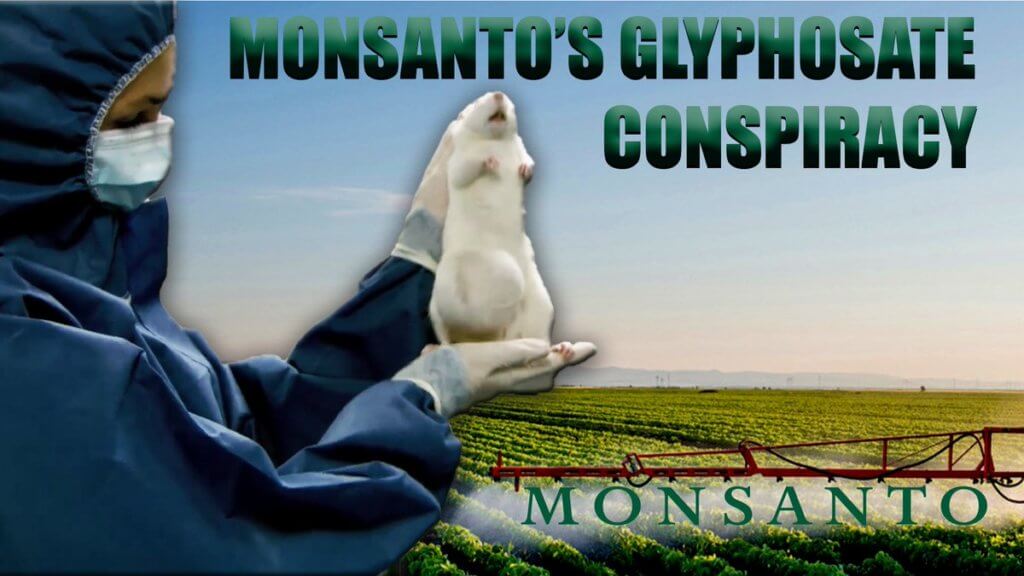The herbicide is widely regarded by scientists as a highly effective, low-toxicity pesticide used by farmers and consumers worldwide to clear farms and home gardens of pesky weeds. But using a tsunami of TV commercials designed to entice anyone with cancer to sign up for the ‘let’s sue Bayer lottery,’ a handful of law firms has launched a legal crusade alleging the chemical giant and its corrupt enablers—read the 15 most influential regulatory agencies in the world, including the European Food Safety Authority, Health Canada and the EPA that say glyphosate is relatively harmless—have been in cahoots to cover up the dangers of Roundup.
What are these alleged dangers? According to the law offices of Wallace & Graham, one of the dozens of ambulance-chasing firms angling for new plaintiffs, glyphosate can cause, among other things, skin irritation, nausea, liver damage, diabetes, kidney disease, Parkinson’s disease, breathing problems, Lou Gehrig’s disease, sterility in men, and, worst of all, cancer.
Killer surfactants!
Now the killer-glyphosate narrative has taken a new twist. Although the EPA on January 30 reaffirmed its long-time finding that glyphosate isn’t carcinogenic, some anti-pesticide activists have seized on a recent study to argue that other ingredients in Roundup may have cancer-causing properties as well. Their allegation highlights a decades-long controversy surrounding chemicals called surfactants, the non-toxic soapy substances that enhance glyphosate’s ability to spread through plants. Surfactants are also found in products ranging from laundry detergents to organic pesticides.

Promotion of the study by a key publicist working on behalf of the glyphosate tort team—former journalist Carey Gillam, director of research at the anti-GMO outfit US Right to Know (USRTK)—adds a new wrinkle to the plaintiffs’ strategy to push Bayer to settle 75,000 or more claims for as much as $10 billion, which could happen any day now. While Gillam and other critics of glyphosate may see the study as a boon to the legal action, their coverage inadvertently exposes the limitations of this and similar studies, and highlights crippling flaws in the allegation that Roundup causes cancer.
Writing in UK newspaper The Guardian on January 23, Gillam outlined the latest study and its significance to the debate over the supposed health risks of Roundup exposure:
Tests by a US government agency on common weedkilling products made with the chemical glyphosate have found some formulations sold to the public …. are damaging to human DNA. But the government scientists at the National Toxicology Program (NTP) say the danger probably lies with added ingredients in the products – not glyphosate.
…. The results, which are preliminary, showed …. genotoxic effects with glyphosate-based formulations (GBFs) that include chemicals called surfactants …. plus the weedkilling chemicals diquat dibromide, mesotrione and metolachlor …. Monsanto’s German owner Bayer AG is currently mired in litigation brought by tens of thousands of cancer patients who claim exposure to Monsanto’s Roundup and other similar glyphosate-based formulated products made by Monsanto caused their cancers ….
The US Environmental Protection Agency (EPA) backs the safety of glyphosate but has not required in-depth carcinogenicity testing of the full glyphosate-based formulated product, focusing research requirements on glyphosate alone.

Dissecting incomplete cell-culture research
The study, conducted by scientists at the National Institute of Environmental Health Sciences (NIEHS), is an example of an in-vitro or cell-culture study, in which isolated cells are exposed to a chemical, often at abnormally high doses, to see what happens. It’s not clear which study Gillam was referring to since she didn’t link to it, though it’s probably a series of preliminary September 2019 experiments from the National Toxicology Program (NTP).
The study has yet to appear in a scientific journal, and therein lies the first problem, according to two experts GLP contacted. “I think it is dangerous to base any conclusions on data that have not been peer reviewed. There is not enough info in that [NTP study],” wrote Trevor Charles, a microbiologist at the University of Waterloo in Ontario, in an email. Biologist Mary Mangan offered an additional word of caution:
Typically, Carey Gillam has omitted key details of the work that would be needed to understand the science. We don’t know what kinds of test were done, on what cell systems, or if dosages reflect real-world exposures. Further, we cannot know if any of the other compounds that are handwaved about here are unique to glyphosate based formulations.
It’s also likely that users have access to many other formulations from other world-wide suppliers. There’s no reason to suspect that surfactants are limited to one product line. The only thing that seems clear from Gillam’s item is that glyphosate itself [is] not genotoxic or harmful to cells in this testing. Of course, as this work is not peer-reviewed and published, it’s impossible to draw conclusions from this apparently preliminary disclosure.
Cell-culture studies shouldn’t be dismissed out of hand. The data they generate can be useful. But we need to remember these experiments give “…. us little idea about the relevance [of Roundup exposure] when it comes to food residues,” cell biologist Iida Ruishalme explained in 2016. This is because cells in a laboratory don’t react to surfactants the way humans do.

“They aren’t protected by your skin or your digestive tract or whatever [organ they come from],” Mangan added. “So exposing them to soap screws up their membranes and kills them. It’s not necessarily that the test compound is genotoxic or mutagenic.” In fact, this sort of research is so nebulous, scientists can and have argued that glyphosate and other ingredients in Roundup not only cause cancer but can be used to treat cancer, as I’ve noted in previous GLP articles.
The science of surfactants
The concern that other Roundup ingredient besides glyphosate could be toxic goes back to at least 1997, when USDA researchers noted that “…. there does not appear to be adequate data to develop quantitative risk assessments of the surfactants.” Several cell-culture and animal experiments since then have suggested that these chemicals may pose dangers, but none of these conclusions has gained much traction in the broader scientific community, for the reasons discussed above and because high-quality epidemiological studies show that farmers (those with the highest exposure to Roundup) do not face a higher cancer risk compared to the rest of the population.
Setting aside the epidemiology for a moment, the research specifically on surfactants tells a much different story than the tale Gillam spun in her Guardian piece. A review published in 2000, for instance, examined all the research related to the potential health effects of glyphosate, its breakdown product aminomethylphosphonic acid (AMPA) and the surfactant polyethoxylated tallow amine (POEA). After surveying the literature, the authors concluded:
[T]he use of Roundup herbicide does not result in adverse effects on development, reproduction, or endocrine systems in humans and other mammals. For purposes of risk assessment, no-observed-adverse-effect levels (NOAELs) were identified for all subchronic, chronic, developmental, and reproduction studies with glyphosate, AMPA, and POEA …. [U]nder present and expected conditions of use, Roundup herbicide does not pose a health risk to humans.
This conclusion was confirmed by a 2009 EPA risk assessment of alkyl amine polyalkoxylates, the class of surfactants POEA belongs to:
There is no evidence that alkyl amine polyalkoxylates are neurotoxic, mutagenic, or clastogenic [able to damage chromosomes] …. Based on these risk assessments, EPA concludes that there is a reasonable certainty that no harm will result to the general population ….
In April 2017, Health Canada similarly concluded that “[n]o risk of concerns to human health or the environment were identified provided that products contained no more than 20% POEA by weight and proposed label directions …. are followed. Finally, a team of Bayer researchers published a study in October 2019 examining the health effects of exposure to polyethoxylated tallow amine (abbreviated as POE-T).
“Repeated dosing of rats with POE-T produced gastrointestinal effects but no systemic effect on organ systems. POE-T was not genotoxic and had no effect on embryo-fetal development or reproduction,” they wrote. After calculating the occupational exposure of farmers and exposure through food (how most people are exposed to the surfactant), the authors concluded:
Based on the results of the occupational and food risk assessments, it is concluded that there are no significant human health issues associated with the use of POE-T as a surfactant in glyphosate products.
Some skeptical readers may balk at this conclusion since it came from Bayer, which obviously has an interest in vindicating its flagship weed killer. That’s a reasonable objection, but the data and methodology for the company-conducted research came from previously published studies, as well as the World Health Organization, European Food Safety Authority and the EPA. More importantly, Bayer’s conclusion matches that of dozens of other studies that have examined surfactants used in Roundup, most notably the assessments from the EPA and Health Canada.
Angling for favorable settlement terms?
Science be damned, anti-pesticide activists have attempted to muddy the waters, pushing the surfactants-might-cause-cancer allegation to demonize what is otherwise considered a safe, effective herbicide. Organic industry-funded agricultural economist Charles Benbook, for instance, recently warned that concerns about surfactants could influence the litigation, without acknowledging the science that contradicts his case.
“It’s the surfactants that are carrying the glyphosate first through the skin and inside the body, and then inside of cells where damage can be done to DNA,” Benbrook told Business Insider in 2019:
In Europe, Benbrook noted, surfactant chemicals have been made less toxic for consumers. In the US, however, Monsanto has not changed Roundup formulas in the same way. ‘When juries learn that Monsanto is making a product that’s at least 10 times, maybe 100 times safer all across Europe?’ he said.
‘That’s not acceptable. That’s one of the reasons that I think we can expect a continuation of these mammoth punitive damage awards ….’

Gillam took this same approach in her Guardian piece, focusing on a series of quotes from the early 2000s, in which several Monsanto researchers, reflecting the caution inherent in all research, seemed to acknowledge they couldn’t confirm the safety of the added ingredients in Roundup. “You cannot say that Roundup is not a carcinogen,” one scientist wrote in an email in 2003. “We have not done the necessary testing on the formulation to make that statement.”
As is her wont to manipulate quotes to serve her ideological interests, Gillam left out the second part of the statement, which provides critical context: “We can make that statement about glyphosate and can infer that there is no reason to believe that Roundup would cause cancer,” the scientist wrote.
Another company scientist, according to Gillam, issued a similar warning in 2010: “With regards to the carcinogenicity of our formulations we don’t have such testing on them directly.” Again, the second part of the quote, which Gilliam tellingly left out, contextualizes the situation: “…. but we do have such testing on the glyphosate component and some extensive [toxicology] testing on the surfactant. Since the glyphosate formulations are simply a blend of these components, I think we can address these questions in a confident manner.” Both statements reflect the conclusions of the research on surfactants discussed above.
Erin Brockovich 2.0

The plaintiffs in the estimated 75,000+ lawsuits alleging that Roundup is carcinogenic have anchored their claim to a heavily criticized 2015 “hazard assessment” issued by the International Agency for Research on Cancer (IARC), which concluded that glyphosate is a “probable carcinogen.” That put glyphosate in the same toxicity category as red meat, drinking hot beverages, and going to the hairdresser or barber, but not in the far more ‘dangerous’ category which includes red wine or coffee. Although scientifically suspect to say the least, Benbrook and Gillam’s claim that surfactants are potential killers has helped the plaintiffs sell the conspiracy narrative to juries and judges that Bayer and sympathetic EPA regulators are suppressing inconvenient science to protect industry profit.
The surfactant argument was especially favored by Tim Litzenburg, one of the attorneys in the Bayer litigation who was recently fired by his firm and charged by the US government for allegedly trying to extort a chemical company that manufacturers surfactants for Roundup. Gillam had worked with Litzenburg to promote the surfactant-cancer link before he was charged.
The messy history of this scientifically dubious claim has not deterred the other lawyers in the glyphosate class action. Attorneys in the second trial (only three cases, all in California, have reached a courtroom so far) likewise told the judge, “Plaintiff intends to introduce even more evidence …. that Roundup is more dangerous than glyphosate because surfactants increase the danger of glyphosate exponentially.” The jury in that trial awarded the plaintiff $80 million, though it was reduced to $25 million. Baum Hedlund, one of the primary law firms involved in the litigation, previously cited the statements from Monsanto scientists as evidence that “once again demonstrates suspicions by Monsanto that it is biologically plausible for the formulated product to promote tumors.”
This is compelling storytelling, reminiscent of films like Erin Brockovich and Conspiracy, but the science behind the lawyers’ claims is thin at best. Yet, the scary rhetoric could very well push Bayer towards a settlement for fear that other juries will be even more outraged when they hear that a callous corporation allegedly ‘ignored’ warnings from its own scientists.
There are several important takeaways from the recent controversy surrounding the still unreleased NTP surfactant research. First, the data and conclusions have not been reviewed by other experts and published in a journal, making it reckless for Gillam or anyone else to draw a conclusion from the results. But even after the results are published, they will only add to a collection of contradictory and inconclusive cell-culture experiments on Roundup, which even anti-GMO news outlet GM watch has acknowledged are problematic.
[T]he NTP seems to have simply added to a large body of data characterized by conflicting results. And crucially, the NTP’s results do not disprove those of the numerous other studies that reached opposite conclusions.
If anything, the willingness of activists and tort lawyers to trumpet the results of what appears to be relatively weak research illustrates the flaws in their case against Bayer, especially since there are hundreds of higher-quality studies and regulatory reviews of Roundup available.
There’s no way to know how the legal battle will play out, although one thing can be said for certain about this whole affair: The narrative of underdog cancer victims and their lawyers unmasking corporate villains isn’t backed up by the evidence. Until more conclusive data come along, there’s no reason to think Roundup or any of its individual ingredients cause cancer.
Cameron J. English is the GLP’s senior agricultural genetics and special projects editor. He is a science writer and podcast host. BIO. Follow him on Twitter @camjenglish































